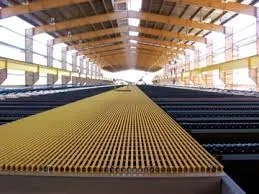
-
 Afrikaans
Afrikaans -
 Albanian
Albanian -
 Amharic
Amharic -
 Arabic
Arabic -
 Armenian
Armenian -
 Azerbaijani
Azerbaijani -
 Basque
Basque -
 Belarusian
Belarusian -
 Bengali
Bengali -
 Bosnian
Bosnian -
 Bulgarian
Bulgarian -
 Catalan
Catalan -
 Cebuano
Cebuano -
 China
China -
 China (Taiwan)
China (Taiwan) -
 Corsican
Corsican -
 Croatian
Croatian -
 Czech
Czech -
 Danish
Danish -
 Dutch
Dutch -
 English
English -
 Esperanto
Esperanto -
 Estonian
Estonian -
 Finnish
Finnish -
 French
French -
 Frisian
Frisian -
 Galician
Galician -
 Georgian
Georgian -
 German
German -
 Greek
Greek -
 Gujarati
Gujarati -
 Haitian Creole
Haitian Creole -
 hausa
hausa -
 hawaiian
hawaiian -
 Hebrew
Hebrew -
 Hindi
Hindi -
 Miao
Miao -
 Hungarian
Hungarian -
 Icelandic
Icelandic -
 igbo
igbo -
 Indonesian
Indonesian -
 irish
irish -
 Italian
Italian -
 Japanese
Japanese -
 Javanese
Javanese -
 Kannada
Kannada -
 kazakh
kazakh -
 Khmer
Khmer -
 Rwandese
Rwandese -
 Korean
Korean -
 Kurdish
Kurdish -
 Kyrgyz
Kyrgyz -
 Lao
Lao -
 Latin
Latin -
 Latvian
Latvian -
 Lithuanian
Lithuanian -
 Luxembourgish
Luxembourgish -
 Macedonian
Macedonian -
 Malgashi
Malgashi -
 Malay
Malay -
 Malayalam
Malayalam -
 Maltese
Maltese -
 Maori
Maori -
 Marathi
Marathi -
 Mongolian
Mongolian -
 Myanmar
Myanmar -
 Nepali
Nepali -
 Norwegian
Norwegian -
 Norwegian
Norwegian -
 Occitan
Occitan -
 Pashto
Pashto -
 Persian
Persian -
 Polish
Polish -
 Portuguese
Portuguese -
 Punjabi
Punjabi -
 Romanian
Romanian -
 Russian
Russian -
 Samoan
Samoan -
 Scottish Gaelic
Scottish Gaelic -
 Serbian
Serbian -
 Sesotho
Sesotho -
 Shona
Shona -
 Sindhi
Sindhi -
 Sinhala
Sinhala -
 Slovak
Slovak -
 Slovenian
Slovenian -
 Somali
Somali -
 Spanish
Spanish -
 Sundanese
Sundanese -
 Swahili
Swahili -
 Swedish
Swedish -
 Tagalog
Tagalog -
 Tajik
Tajik -
 Tamil
Tamil -
 Tatar
Tatar -
 Telugu
Telugu -
 Thai
Thai -
 Turkish
Turkish -
 Turkmen
Turkmen -
 Ukrainian
Ukrainian -
 Urdu
Urdu -
 Uighur
Uighur -
 Uzbek
Uzbek -
 Vietnamese
Vietnamese -
 Welsh
Welsh -
 Bantu
Bantu -
 Yiddish
Yiddish -
 Yoruba
Yoruba -
 Zulu
Zulu
frp demister
Understanding FRP Demisters Essential Components for Effective Gas Processing
In the realm of industrial gas processing, ensuring that gas streams are free from liquid droplets and impurities is crucial for the efficiency and safety of various operations. One effective solution that has emerged in recent years is the FRP (Fiberglass Reinforced Plastic) demister. This article delves into the importance, functionality, and advantages of using FRP demisters in gas processing applications.
What is an FRP Demister?
An FRP demister is a type of mist elimination device that is utilized to separate liquid droplets from gas streams. It is primarily composed of fiberglass, which provides not only strength and durability but also resistance to corrosion and harsh environmental conditions. FRP demisters have become a popular choice in applications where traditional materials might fail due to corrosive substances or extreme temperatures.
How Does it Work?
The basic principle behind an FRP demister is relatively straightforward. As gas flows through the demister, it encounters a structured packing media, typically consisting of knitted or corrugated fiberglass elements. When the gas stream comes into contact with these elements, the inertia and surface tension cause the liquid droplets to coalesce and accumulate. As they grow larger, these droplets eventually settle down due to gravity, allowing the cleaned gas to exit the demister.
Advantages of FRP Demisters
1. Corrosion Resistance One of the significant advantages of FRP demisters is their exceptional resistance to corrosive chemicals. Traditional metal demisters are often prone to rust and degradation when exposed to harsh environments. FRP materials, on the other hand, maintain their integrity, leading to a longer lifespan and lower maintenance costs.
2. Lightweight Design FRP demisters are remarkably lightweight compared to their metal counterparts. This characteristic allows for easier handling and installation, reducing the overall project costs associated with structural support and transportation.
frp demister

3. Cost-Effectiveness Although the initial investment in FRP technology may seem higher, the long-term savings associated with reduced maintenance and replacement costs make them a highly cost-effective solution in the long run.
4. Versatility FRP demisters can be employed in a myriad of applications including petrochemical plants, power generation facilities, and wastewater treatment plants. Their adaptability makes them suitable for various operational settings and conditions.
5. Enhanced Performance The unique design of FRP demisters ensures efficient separation of liquid from gases, resulting in improved product quality and process efficiency. They are capable of catching even the smallest droplets, making them ideal for processes necessitating high purity levels.
Applications of FRP Demisters
FRP demisters are commonly used in industries where gas processing is an integral part of operations
- Petrochemical Industry Used to refine and process petrochemical products, ensuring that gases are free from liquid contaminants. - Power Generation Integral to the thermal and gas power plants, helping in effectively removing moisture from exhaust gases. - Chemical Processing Employed in various chemical production processes to eliminate liquid from gaseous streams. - Wastewater Treatment Utilized in wastewater treatment plants to separate water from gases released during treatment processes.
Conclusion
FRP demisters play a critical role in enhancing the efficiency and safety of gas processing operations. Their unique combination of corrosion resistance, lightweight design, and cost-effectiveness makes them an invaluable asset in various industries. As technology advances and the demand for cleaner gas emissions continues to rise, the adoption of FRP demisters is expected to grow, further solidifying their position as a key component in industrial gas processing systems. Understanding and utilizing this technology will undoubtedly pave the way for more sustainable and efficient operational practices in the future.









